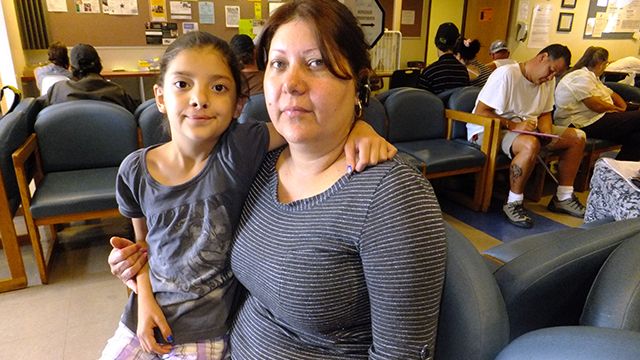We’re proud to collaborate with The Nation in sharing insightful journalism related to income inequality in America. The following is an excerpt from Nation contributor Greg Kaufmann’s “This Week in Poverty” column.

The Temporary Assistance to Needy Families (TANF) program was created by what is commonly referred to as “welfare reform” in 1996. It replaced Aid to Families with Dependent Children (AFDC) as the program through which some low-income families are able to receive cash assistance.
With TANF authorization expiring at the end of March and needing to be renewed (and hopefully improved) — and over 46 million people still living below the poverty line of $23,021 for a family of four — here are ten things you should know about the program:
1) There is no cash entitlement program for people living in poverty in the U.S. States (including Washington, D.C.), the tribes and the territories have wide discretion, so there are more than fifty different TANF systems in the country.
2) Most people in poverty do not receive cash assistance. In 1996, for every 100 families with children in poverty, there were 68 families who accessed cash assistance. In 2011, for every 100 families with children in poverty, 27 accessed cash assistance.
3) Over the last 16 years, the number of people receiving TANF cash assistance has declined by 60 percent, even as poverty and deep poverty — people living below half the poverty line — have increased.
4) TANF is reaching fewer children. In 1995, AFDC kept over 2.2 million poor children — over 62 percent of all poor children — out of deep poverty. In 2005, TANF lifted just 21 percent of children who would otherwise be in deep poverty, or just 650,000 kids.
5) The cash benefit is less than 50 percent of the poverty line in every state— so less than $9,000 for a family of three — and less than 30 percent of the poverty line in most states, or less than $5,500 annually for a family of three.
6) The TANF block grant has been frozen since 1996 so its value in real terms has declined by over 30 percent. Congress also recently failed to fund the Supplemental Grants for 17 poorer states which had received them since 1996, reducing the overall funding of these high poverty states by as much as 10 percent.
7) The “work participation rate” is a failed measure that stifles effective career pathways. The federal government rewards or penalizes states based on whether TANF recipients are doing “countable activities,” with no assessment as to whether those activities lead to employment entry, job retention, advancement or poverty reduction. So sweeping a county garage might be an approved activity, while post-secondary education leading to a wage that supports a family may not be permitted at all, or only for a limited number of recipients.
8) The work participation rate discourages states from serving the most “needy” families that have multiple barriers to employment — such as physical or mental health limitations, a child with a health problem or an experience with domestic violence — even though these are the people with the most to gain from employment assistance. The priority is serving people who are able to meet the work requirements with little or no assistance.
9) The TANF Emergency Fund placed more than 260,000 low-income adults and youth in paid jobs at the height of the recession. Thirty-seven states participated in this public-private partnership, and it earned bipartisan support from governors. But Congress allowed it to expire in September 2010.
10) A weak TANF has contributed to a rise in deep poverty. The number of people living in deep poverty has risen from 12.6 million in 2000 to 20.4 million people today. This includes over 15 million women and children — 9.8 percent of all children.
 |
Greg Kaufmann is a Nation contributor covering poverty in America. His work has also appeared on Common Dreams, Alternet, Tikkun.org, NPR.org, CBSNews.com and MichaelMoore.com. He serves as an adviser for the Economic Hardship Reporting Project. |

